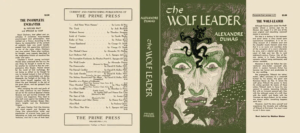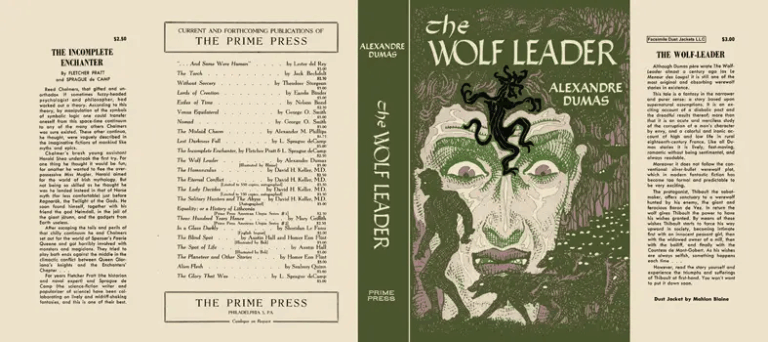In the previous weeks I bought you what I referred to as the two main factions of Peter Pan in Kensington Gardens, J.M. Barrie‘s story preceding the much more famous Neverland story arc: we have birds on one side, living on the Serpentine Island, and faeries on the other side, haunting the Gardens. Arthur Rackham richly illustrated the story (a more elegant way of saying that he did a shitload of coloured plates and quite a few black and white drawings too): I’m trying to collect all illustrations grouped by theme, and below each one you have the sequential number of where it appears in the tale. If you want bibliographical references, peruse the articles I published on previous Sundays. This Sunday Story appointment has become a thing.
Today I bring you the third group of characters we have in the tale: children.
Children were the main audience for J.M. Barrie, who started his storytelling career by directly narrating to many of them: the boys in the Llewelyn Davies family, particularly George and Jack, who both later died in World War I. A lot has been written around the accusation of paedophilia, which is apparently unsubstantial: if you want to read something about it, I suggest you stay clear of newspapers and read some biographical material.
One of the most complete resources is J.M. Barrie & the Lost Boys: The Real Story Behind Peter Pan by Andrew Birkin, one of the first works to put together «a vast range of material by and about Barrie, including notebooks, memoirs, and hours of recorded interviews with the family and their circle, to describe Barrie’s life and the wonderful world he created for the boys».
Anyway, that’s not why we’re here. We’re here for the pretty pictures, so let’s get to it.
Maimie Mannering and the other children
The character of Maimie Mannering is, in certain ways, the forerunner of Wendy: she’s Peter’s first kiss and thistle and she’s the first one to dump him too. But having Maimie of course requires children and this, as we know, can happen in two ways: during daylight, when people stroll about in the Gardens, or at dusk for those who get lost and overstay the Park’s closure.
So let’s take a look at the presence of children, first, before getting to Maimie’s adventure.
The social satire that was a central theme in The Little White Birds creeps back in when Barrie makes fun of well-dressed people parading up and down the Broad Walk, and Rackham follows him putting great care and detail in the expensive Edwardian attires of these children.
There’s a lot of (really ugly) websites and orphaned Pinterest boards with reference for children’s Edwardian fashion, and they’re mostly encrusted with Google Ads and clickbaits. After a bit of digging, I was able to discover a blog dedicated to Edwardian clothing (here’s the hashtag for children’s fashion). You also have a section for children’s wear in this beautiful article by Karina Reddy on the Fashion History Timeline.
There’s also a selection of photographs and drawings you can peruse in the on-line archives of the Victoria & Albert Museum (here’s the filtered search for pictures and here’s another one for objects, covering a broader period). Some references for children’s fashion in the Edwardian Era are also Charles Robinson’s illustrations to The Secret Garden (see for instance this one). I love this book and it might be one of the stories I’ll do next.
The introduction of children allows us to make our acquaintances with another concept that’s central in Peter Pan: the idea of lost children. The Hump is a specific part of the Broad Walk in Kensington Gardens and it’s presented as a liminal place:
“…you stop when you have run about half-way down it, and then you are lost”.
It’s precisely by playing in the gardens that we make our acquaintance with Maimie Mannering, and specifically we do so because of his brother, who’s heard by a fairy while he boasts about wanting to steal Peter’s boat and because of that he’s hexed.
More then hexed, he becomes a “marked boy”, being he’s the target of fairies tricks and jinx and mischief. Still, it’s kind of creepy and one has to wonder whether Maimie’s brother eventually grew up to be a serial killer, also considering the kind of weird stuff that goes down with his sister later.
Maimie herself, however, decides to stay in the Gardens past Lock-out time when winter is already well on its way, and this gives us the chance to see some more bare trees from Rackham and some beautiful scenes of the Gardens with snow.
The illustration above is probably one of the most famous not featuring fairies and you know (from Undine, at least) how much I love it when Rackham gives us some architecture. This winter scene is uncharacteristically facing away from the Gardens themselves and towards a group of houses, maybe because young Maimie is about to stay on this side and we’re seeing the scene through her eyes.
Rackham also gives us some wonderful black and white illustrations for the 1912 edition, and it would be a shame to leave them out.
Young Maimie hides in St Govor’s Well, a spot you can read about here. The place is a Holy Well dedicated to a VI Century hermit, but Maimie’s experience is far closer to Kay’s one when meeting the Snow Queen: she feels something cold running up her legs and arms and dropping into her heart.
“It was the stillness of the Gardens.”
On the background of this beautiful illustration we see a people walking, unable to see the young and fur-clothed Maimie while she’s hiding, but most importantly we see the silhouette of the far-away city with profiles looking a lot like a graveyard. And when it comes to children’s graves, Peter Pan in Kensington Gardens gets creepy as fuck, but more on that later.
At dusk, trees begin to speak, flowers go for a walk and fairies come out of hiding.
Specifically, trees are able to walk using sticks as crouches and they are those sticks «that are tied to young trees and shrubs» in order to support them. As the genius writer he is, Barrie like Carroll uses supernatural events to explain simple things and give new meaning to everyday objects. The elderberry is sambucus, a tree that has a strong connection with folklore and witches gatherings, while quince is the name of that wild rose that produces little sour apples, from which people make jams. It has a strong connection with mythology, especially Roman and Greek: the two trees talking are like two worlds meeting and having a chat, in the winder landscape of Kensington Gardens.
The third named vegetable species we make our acquaintance with in Rackham’s illustrations is the one discovering your Maimie and calling her out: an out-of-scale chrysanthemum. It’s winter, so it kind of make sense for this flower to be around, and Barrie had spent enough time in the Gardens to pay attention to these kind of details.
Its dimensions however are not really clarified and Rackham takes a poetic license, here, by enlarging it to a human-sized dandelion as it happens when Alice shrinks down, and Rackham will illustrate Alice in Wonderland in 1907, one year after his first work on Kensington Gardens.
Called out by the chrisanthemum to state her business, Maimie soon finds herself chatting with the trees and Rackham enjoys a lot their portrayal, with one seemingly wrapped up in a dark red shawl. Fairies, apparently, do not only have a bon to pick with the birds: trees too warn the child of the danger the little people might pose to her.
“They will mischief you—stab you to death, or compel you to nurse their children, or turn you into something tedious like an evergreen oak.”
As it often happens, Barrie pairs the horrific with the satirical; there’s nothing worst, for the trees, than being turned into a boring evergreen tree (and we have seen that seasons are fun, in Kensington Gardens, something I rather agree after having been in Singapore a couple of times). We’re still trying to wash away from our minds the idea of being forced to nurse a changeling child.
Maime, of course, ignores their advice.
And she’s apparently right, too, since the fairies do not have hostile intentions towards her and even build a house around her in order to save her from the freezing winter night in the Gardens. This is a forerunner of the house the Lost Kids will build around Wendy after she’s been struck down by Tootles’ arrow and has the same mixture of sweetness and unsettling creepiness. There’s death, lurking, and it’s made even more scary by the fact that the children keep on playing and they do not seem to notice.
Again, we get lots of Alice in Wonderland’s vibes, with this perfectly valid but miniatured house being built around sleeping Maimie, with the proportions of a mansion but the dimensions of a tent.
This is when Peter and Maimie meet, while she’s stepping out of the house and the house shrinks until it disappears. Peter half-warns and half-scares Maimie into being aware of fairies. We’re told that Peter «has been too late several times» in helping children that had overstayed after Lock-out time. And this is no joke.
The girl portrayed is most certainly not Maimie, both because this effectively does not happen to her and because of the way this girl’s dressed, in far less wintery clothes. Her light chestnut hair, her blue dress and the straw hat seem to be suggesting Rackham is already courting Alice, and at her feet we see one of the fairy circles I already had the chance of talking about while talking about dancing mushrooms.
Maimie meets Peter and they exchange a thistle and a kiss, just like Wendy, but Rackham shows us nothing of this. In some black and white illustrations, however, he shows us her dog-nanny, should you need further proof that Maimie really is the forerunner of the much more famous Wendy.
I see dead people
Say what?
One of the things that make Peter Pan in Kensington Gardens so great, is the sense of unsettling macabre that creeps unto us in a joyful way that’s the most genuine rendition of that way only a child can be: cruel and creepy. The first encounter with something like this in Rackham’s illustrations is the scene in which the ambulant balloon lady gets dragged away by her own balloons and risks her neck.
“David was very sorry for the old one,
but as she did let go,
he wished he had been there to see”.
The only other work able to mix the same sense of wonder with a creepy sense of looming death, like a child at play, has in my opinion been P.L. Travers with her Mary Poppins.
But this does not stop with people being carried away by balloons: there’s dead children, in this tale.
Do you remember Peter warning Maimie about the mischievous fairies and the tricks they play to people who stay after lock-out hour? And saying he had been “too late” several times? Well, too late literally means too late: in the cold and dark gardens, children die and Peter digs them little graves with his paddle. There’s no metaphor, here. There’s dead children a seven-days old child is burying.

“I think that quite the most touching sight in the Gardens is the two tombstones of Walter Stephen Matthews and Phoebe Phelps.” (Plate 51)
Barrie makes up names for the two stones, which in reality carry carvings W St. M and PP to signify the two parishes of Westminster St. Mary and Paddington, but Rackham doesn’t fall for his trick and shows us a perfectly accurate illustrations of the two carved stones.




























No Comments